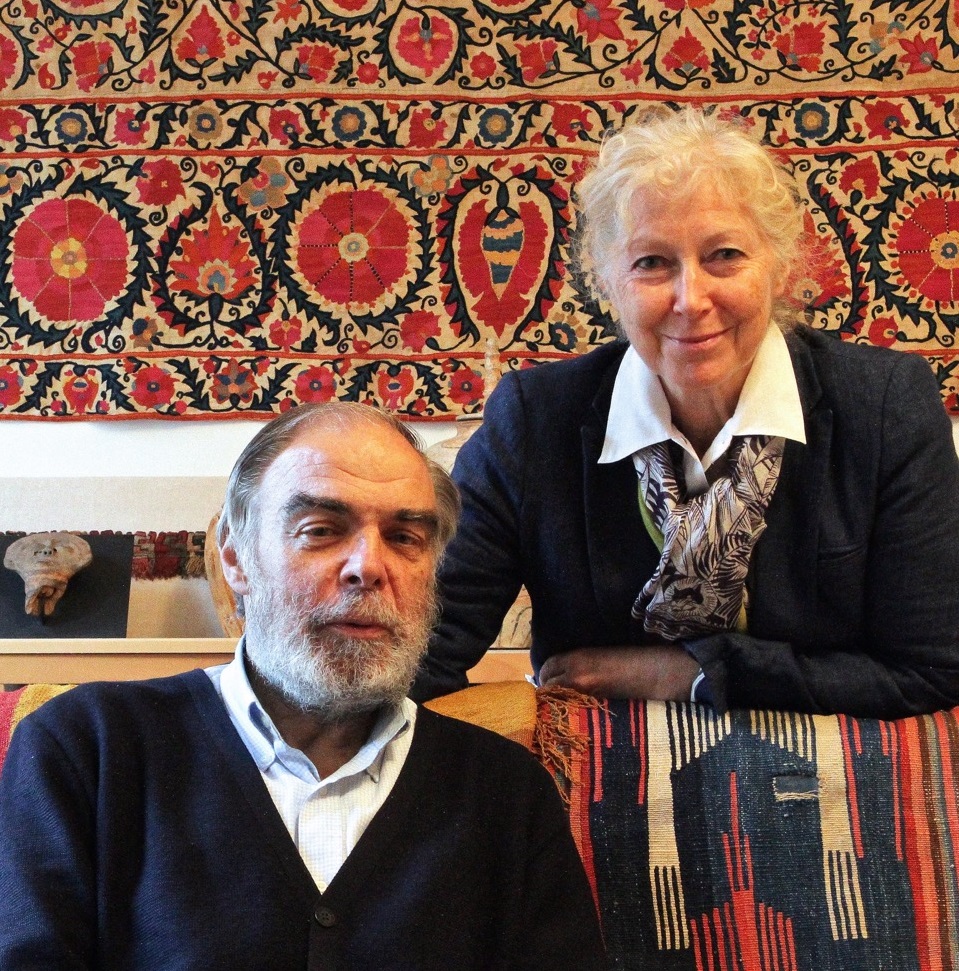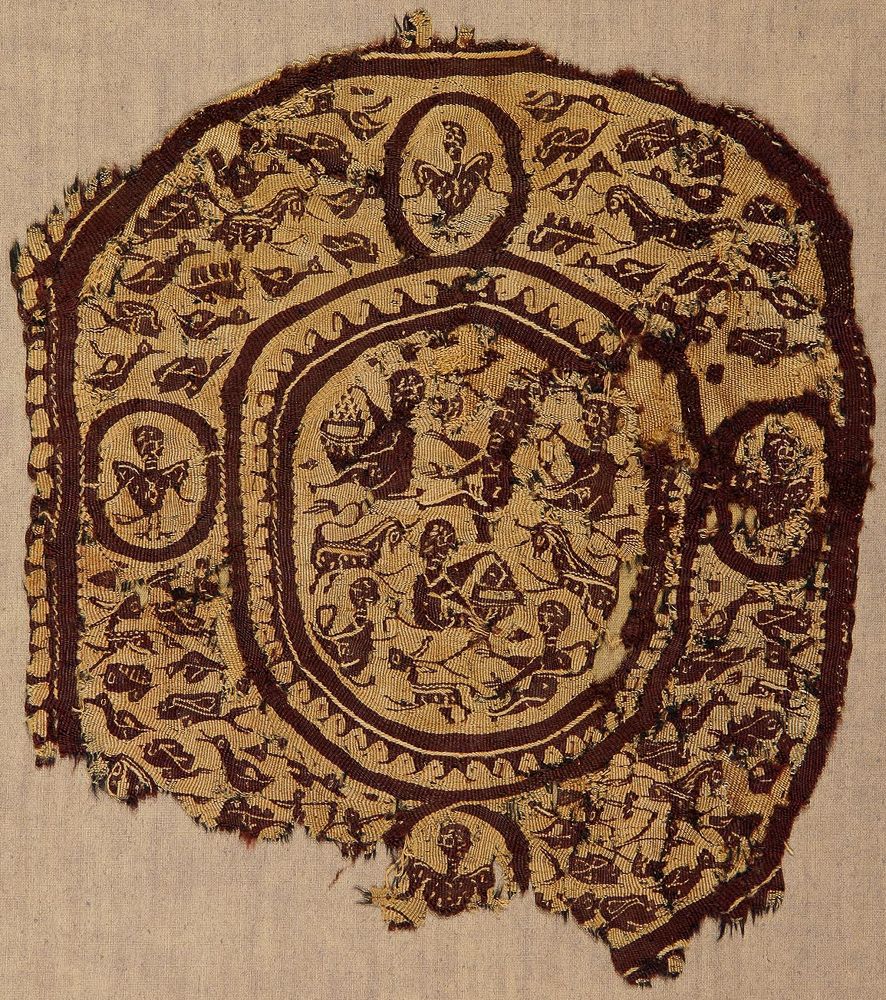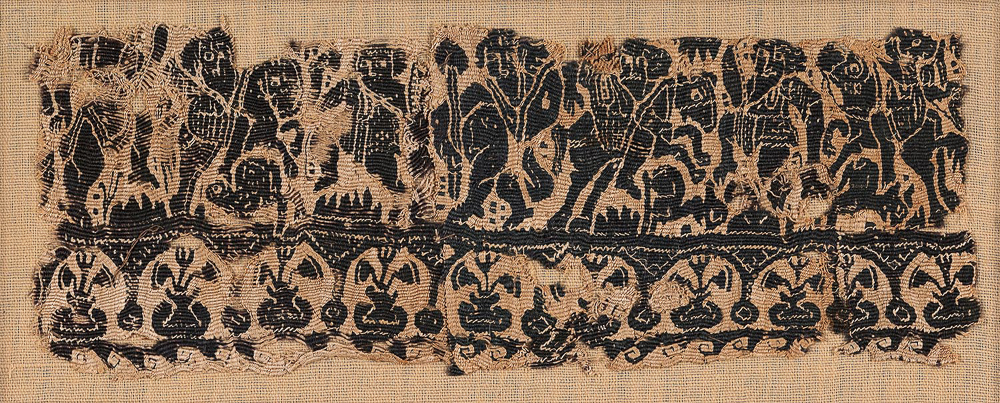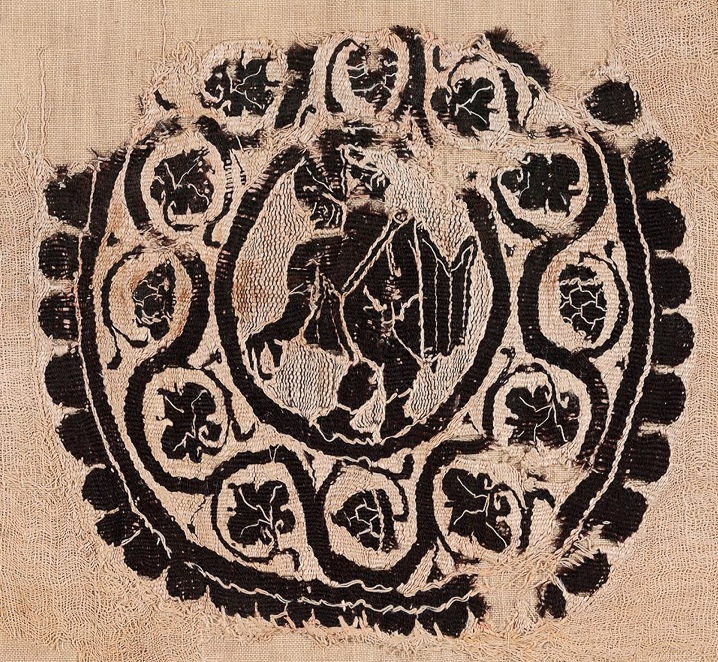
Maria Luise Fill and Robert Trevisiol were both passionate about textiles from a young age. They began by collecting oriental carpets prior to discovering the sophistication of ‘Coptic’ textiles. It was a passion that led the couple to collecting almost 300 pieces over a 30-year period.
“The pleasure of touching, of running your fingers over a fabric to feel its softness – what the ancient drapers referred to as the hand – is difficult to express in words, but it’s this almost sensual emotion that has always enchanted us and guided our choice of acquisitions” explains Robert Trevisiol about their collection.
A chance discovery
It was by chance, during the TEFAF international art and antiquities fair in Maastricht that they visited every year, that the couple discovered the Coptic textiles. On a classical archaeology stand, they spotted two tapestry medallions teeming with detail: the orbiculi represented Nilotic scenes, bursting with people and animals.
Today, one of these medallions is part of their collection. However, it was actually through a Parisian dealer specialised in Egyptian antiquities, that Maria Luise Fill and Robert Trevisiol acquired their first fragment of Coptic textile. This was the tapestry neckline of a tunic bearing a frieze of horsemen and armed figures, above a row of vases with lotus capsules.
“The Coptic textiles gave us the feeling that our collection was changing gear in relation to the antique carpets that we’d been collecting for a dozen or so years and which had multiplied and diversified far beyond their original decorative purpose”, remembers Robert Trevisiol.

FT 29. Photo Michel Lechien

FT 11. Photo Michel Lechien

FT 30. Photo Michel Lechien
A varied and representative ensemble
Starting with this first piece, Robert Trevisiol thinks that he and his wife have been ‘rather lucky’ over the last 30 years: “Friendly antique dealers have repeatedly enabled us to make certain acquisitions and have sometimes even given us a priority viewing of something they have found, as well as sharing with us their experience and knowledge.”
Their contacts and discoveries have given them the opportunity to build up a varied and representative ensemble. Given its strength, both as a collection and for its individual elements, the King Baudouin Foundation’s Heritage Fund felt that everything had to be done to facilitate handing down to future generations these textiles created in Egypt, but impregnated with the classical culture of antiquity, which lays at the roots of our own heritage.
